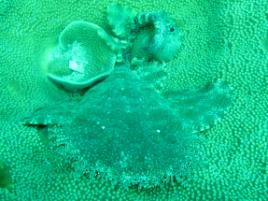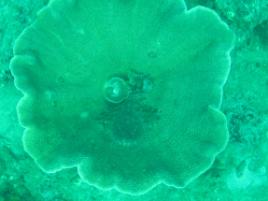Concerns on overfishing of wobbegong sharks
Published on 26 August, 2010
Wobbegong shark (Eucrossorhinus dasypogon) numbers could be under threat due to an increase in hand-lining for the species on Australia's east coast, according to CQUniversity's reef researcher Alison Jones.
Dr Jones said the main predators for these sharks are hand-line fishers.

A wobbegong spotted in coral at Halfway Island in the Keppels."In the last years, hand-lining for these sharks has been on the increase," Dr Jones explained.
"Like all sharks, wobbegongs are susceptible to overfishing and the demand for wobbegong meat is on the increase. Their slow reproductive capacity also makes them susceptible to overfishing."
On a recent coral monitoring trip to Halfway Island in the Keppels, Dr Jones captured on camera this juvenile tasseled wobbegong hiding inside one of the stony vase-shaped Turbinaria coral species.
These ‘carpet' sharks grow up to 1.25 metres long and live on the bottom of the ocean.
"One unusual characteristic to this wobbegong is that it curls its tail up when in repose on the sea floor and as you can see in the photo the shark has its tail curled up.
"This also allows the shark to latch onto anything that grabs it by the tail so it is advisable not to touch the sharks if encountered. They have very sharp backwards facing teeth and a wobbegong bite can be quite painful ... the shark is often difficult to remove from their victim's hand.

There are overfishing fears about wobbegongs, also known as carpet sharks"Although they look sleepy they are quite agile so it is best not to tamper with them. At night wobbegongs actively stalk octopuses, squid, crabs, sharks (including other wobbegongs), rays and reef fishes.
"The blotches are part of the camouflage which help the shark hide from its predators."

